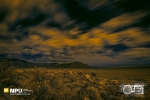

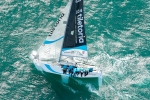


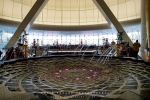
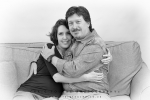

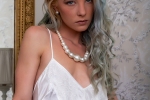
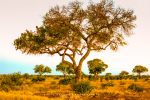
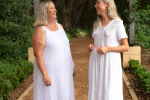
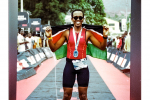
How does the focal length of standard lenses for medium format cameras (75mm/80mm) compare with 40mm-58mm on 35mm cameras? When I was younger, I just accepted that the 75mm lens in my Rolleicord was equal to the 50mm lens in my Praktica. This is not so, nor is it clear cut. It depends on how you calculate it. The focal length of a ‘standard’ lens is calculated by measuring the diagonal of the film format. As every schoolboy knows that the square on the hypotenuse of a right-angled triangle is equal to the sum of the squares on the other two sides. From the diagonal of a film format can be easily calculated. For those who have forgotten: to calculate the diagonal of a 35mm negative use the following formula. (24 x 24) + (36 x 36) and find the square root of the answer.
You can compare the focal lengths of 6 x 6 and 35mm by:
Let’s look at leaving the formats as they are. 6 x 6 is actually 56 x 56 from which the diagonal is 79.20mm. This means that 80mm is about right or maybe 75mm. But when it comes to 35mm the diagonal measures 43.2666153055mm – So a focal length of 45mm would be closer to the medium format standard lens of 80mm. There are some cameras with a standard lens of 45mm – notably the Contax G series. The popular Rollei 35 series used a 40mm as did the Leica CL and Minolta CLE. But most 35mm cameras used the 50mm.But even this doesn’t work as the 6 x 6 format is really meant to be 645 which is 41.5mm x 56mm, unless of course you take pictures for calendars. I am assuming that Rolleiflexes/cords use a square format, as the right-way-around pentaprism had not been invented when the cameras were introduced . The TLR can be turned on its side to get a vertical format but it is scarcely convenient. From that, you think in 645 terms when taking the picture but can have either vertical or horizontal at the time of printing. So with that in mind, the diagonal of 645 is 69.70mm so a 70mm would be closer to the correct standard lens. Even this is not quite right as the 35mm format has a ratio of 1:1.5 whilst 645 is about 1:1.35.
So now you could alter the 645 format to 35mm proportions which works out as 56mm x 37.33mm. The diagonal of which is 67.30mm making the standard lens as 65mm possibly 70mm. Now, for those who like the 35mm format in those proportions then this is a correct comparison. From that you can calculate other focal lengths.
| 40mm | 25.71mm |
| 50mm | 32.13mm |
| 60mm | 38.56mm |
| 75mm | 48.20mm |
| 80mm | 51.42mm |
| 90mm | 57.85mm |
| 120mm | 77.13mm |
| 150mm | 96.41mm |
| 180mm | 115.70mm |
| 250mm | 160.69mm |
| 21mm | 32.67mm |
| 24mm | 37.33mm |
| 35mm | 54.44mm |
| 40mm | 62.22mm |
| 50mm | 77.78mm |
| 90mm | 140.01mm |
| 135mm | 210.02mm |
| 200mm | 311.14mm |
From this you can see that 80mm is roughly equal to a touch over 50mm in 35mm terms, which is probably how the factory arrived at these focal lengths. IF YOU DO IT THAT WAY !
Now, I don’t like the proportions of 35mm. It is OK for landscapes but portraits look odd, as the picture is too tall. On top of that very few sizes of standard B&W printing papers are of the same proportions. None conform to 35mm format with the exception of the enprint size of 6 x 4 recently available for that very purpose. 8 x 10 needs only 30 x 24 as does 16 x 20. I have found that 24mm x 32mm would be better. It is interesting to note that the original Nikon cameras, made just after the war, were this very size. The USA forbade their import as it didn’t suit Kodachrome processing mounts of 24mm x 36mm. It is also interesting to note that 24mm x 32mm conforms to this 4/3rds format frequently mentioned in the photo magazines in relation to digital photography. It is also interesting to note that the 645 format is all but the same ! If you want to be awkward then 42mm x 56mm IS the same proportions rather than 41.5mm x 56mm. So the calculation now alters as the diagonal of a 32mm x 24mm is exactly 40mm. Perhaps that is why the famous Rollei 35 series had a 40mm lens !
| 40mm | 22.95mm |
| 50mm | 28.69mm |
| 60mm | 34.43mm |
| 75mm | 43.04mm |
| 80mm | 45.91mm |
| 90mm | 51.64mm |
| 120mm | 68.86mm |
| 150mm | 86.08mm |
| 180mm | 103.29mm |
| 250mm | 143.47mm |
| 21mm | 36.59mm |
| 24mm | 41.82mm |
| 28mm | 48.79mm |
| 35mm | 60.98mm |
| 40mm | 68.70mm |
| 50mm | 87.12mm |
| 90mm | 156.82mm |
| 135mm | 235.23mm |
| 200mm | 348.50mm |
So there is not a lot of difference between the two. Making the 645 format the same proportions as 35mm is roughly in agreement with the manufacturers. 50mm being slightly less than 80mm and slightly more than 75mm in medium format terms using the first method. Using the second method which fits the paper better anyway changes the situation making 90mm the equivalent focal length of a 50mm lens on a 35mm camera. It is also interesting to note that a 50mm lens is based on a 2” lens which is a hint longer in focal length. The theoretical focal length of a Zeiss (Kyocera/Contax) 50mm f1.7 is actually 51.9mm making 51.64mm even closer to 90mm in medium format terms. It is interesting to note that a 42mm x 56mm format has a diagonal of exactly 70mm so calculating becomes easy to remember and easy to do. So it is up to you whichever format suits you best as to which are the correct equivalent focal lengths.
There is a wonderful app called mmCalc, which is free and can be used online as well, various formats and custom formats can be calculated, click here.
Please subscribe to my free monthly NO-SPAM newsletter which will inform you of any new workshops, activities, products and upcoming events.
SUBSCRIBEI am a Western Cape Winelands photographer based in South Africa, photographing locally and internationally. I am a registered NPS (Nikon Professional Services) member, a contributor to Nikon South Africa's social media pages and website. I photograph a broad variety of genres, using film - 35mm, 120, 127 and 4x5" 4x10, 5x7" & 8x10" format as well as digital medium and are very passionate about my work.
My work has been published in various South African newspapers and magazines including Atlantic Gull Magazine with a cover, SA4x4, HIGH LIFE (British Airways Magazine), Getaway Magazine, Wildside Magazine and Weg!/go! Magazine. I finished as a Top Ten finalist in the 2016 Getaway Magazine Gallery Competition, finishing with Highly Commended. The South-African national news broadcaster eNCA has also made use of video footage that I have produced.
Please feel free to comment and share. You can also click on the social media buttons in the footer below and see what I am currently doing, or sign up for my newsletter and follow me.
Until next time, thanks for your support, appreciating my work and reading my blogs.
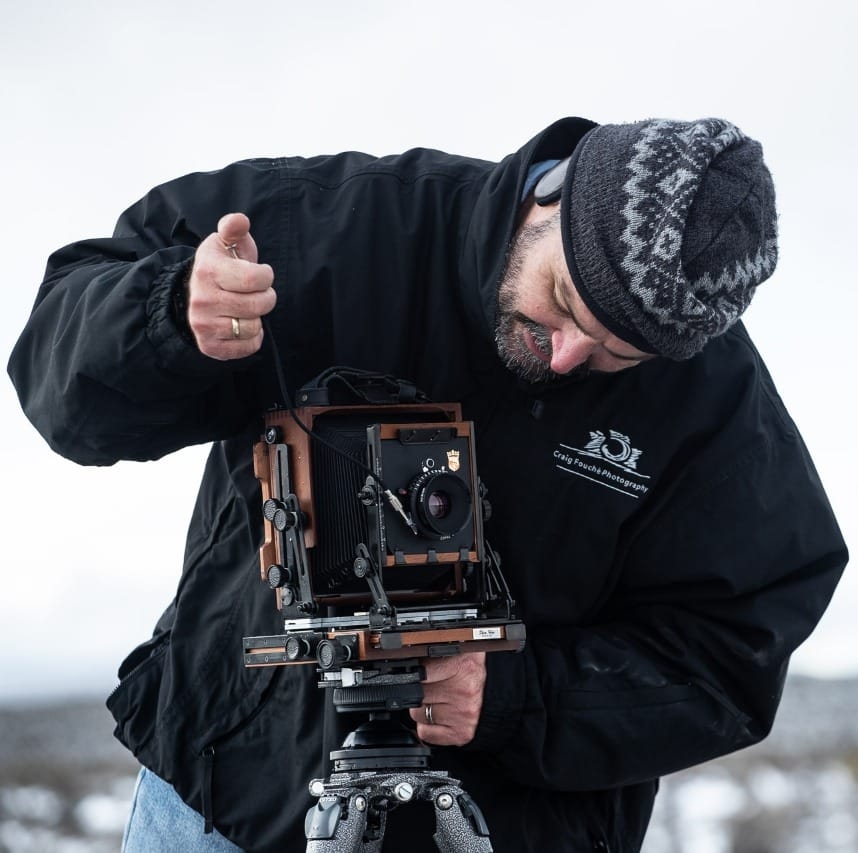
Craig Fouché, Rogge Cloof, Sutherland, South-Africa ©2020 Kirsten Frost Photography